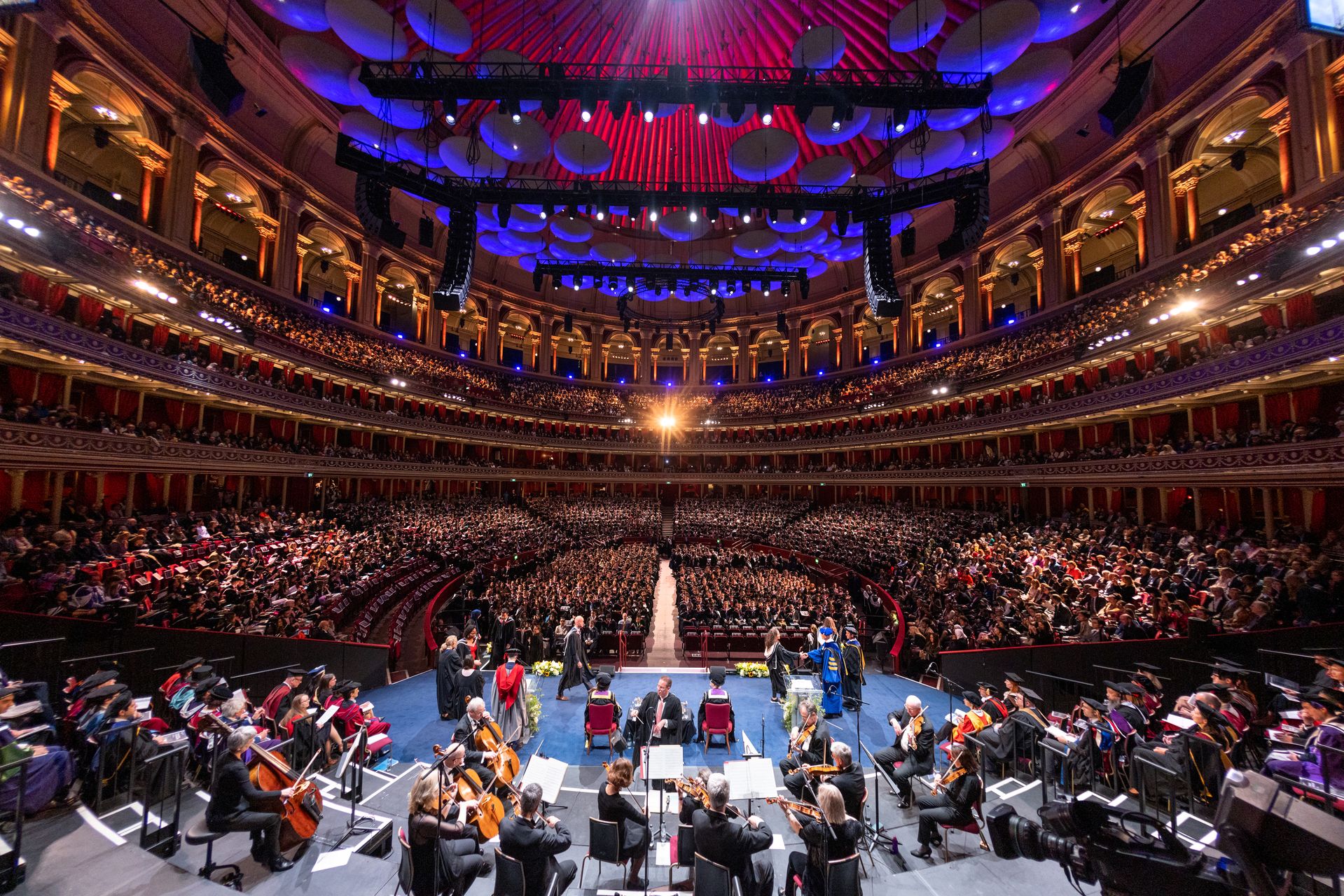
Welcome to the Royal Albert Hall for Graduation Day 2024. We’ve been hosting Imperial graduations here for over 60 years, and today, a new set of students and their loved ones are celebrating their journeys at Imperial.
Discover more about the sights, sounds and traditions of graduation ceremonies at Imperial.
The Imperial Mace
At graduation, the Mace marks the arrival of the Provost and President during the Procession.
The four crown parts of the head are all hand-forged and the harp, lion and book edges are all hard gold plated in lemon gold.
The helix-shaped stem represents human DNA or a chain of atoms in a spiral, referencing our expertise in science and medicine.
The base of the stem is engraved with the Goldsmiths' Company coat of arms with an inscription reading ‘Gift of the Worshipful Company of Goldsmiths 2009’.
The four crown parts of the head are all hand-forged and the harp, lion and book edges are all hard gold plated in lemon gold.
The helix-shaped stem represents human DNA or a chain of atoms in a spiral, referencing our expertise in science and medicine.
The base of the stem is engraved with the Goldsmiths' Company coat of arms with an inscription reading ‘Gift of the Worshipful Company of Goldsmiths 2009’.
Music
The orchestra you’ll hear today is conducted by Mr Oliver Gooch, Director of Music and the Blyth Centre at Imperial. We are also joined by organist Mr Andrew Lucas, Master of the Music at St Albans Cathedral.
Pre-ceremony entertainment is provided by The Scopes – Imperial’s A Cappella Society.

Academic dress
While academic dress has its origins in medieval Europe, today it denotes the graduate’s institution and the level of degree awarded. The theme running through all of Imperial’s gowns is purple, an homage to the work of Royal College of Chemistry alumnus Sir William Henry Perkin, who invented mauveine, the world’s first synthetic purple dye, in 1856. All graduating Master's students wear black gowns and black hoods with white and purple lining. The colour of the collar denotes the Faculty.
Master's students from the Faculty of Engineering wear a grey collar.
Graduating students from the Faculty of Medicine wear a red collar; and those from Faculty of Natural Sciences wear a yellow collar.
Business School graduands wear a pink collar.
PhD and DSc recipients wear purple hoods and purple gowns; the sleeves of PhD are purple, while those of DSc graduands are white.
Graduands from the Centre for Higher Education Research and Scholarship, and the Centre for Languages, Culture and Communication wear a purple collar with a white stripe.





Master's students from the Faculty of Engineering wear a grey collar.
Graduating students from the Faculty of Medicine wear a red collar; and those from Faculty of Natural Sciences wear a yellow collar.
Business School graduands wear a pink collar.
PhD and DSc recipients wear purple hoods and purple gowns; the sleeves of PhD are purple, while those of DSc graduands are white.
Graduands from the Centre for Higher Education Research and Scholarship, and the Centre for Languages, Culture and Communication wear a purple collar with a white stripe.





The Imperial mascots
You may wonder what a 1916 Dennis N type fire engine is doing around campus today. Jezebel, as she’s now known, is one of Imperial’s mascots and was gifted to Imperial in 1959 as a means of transportation for the President.
First used during air raids in World War I, she now lives a charmed life being maintained by the RCS Motor Club, for occasional outings including at Graduation.


